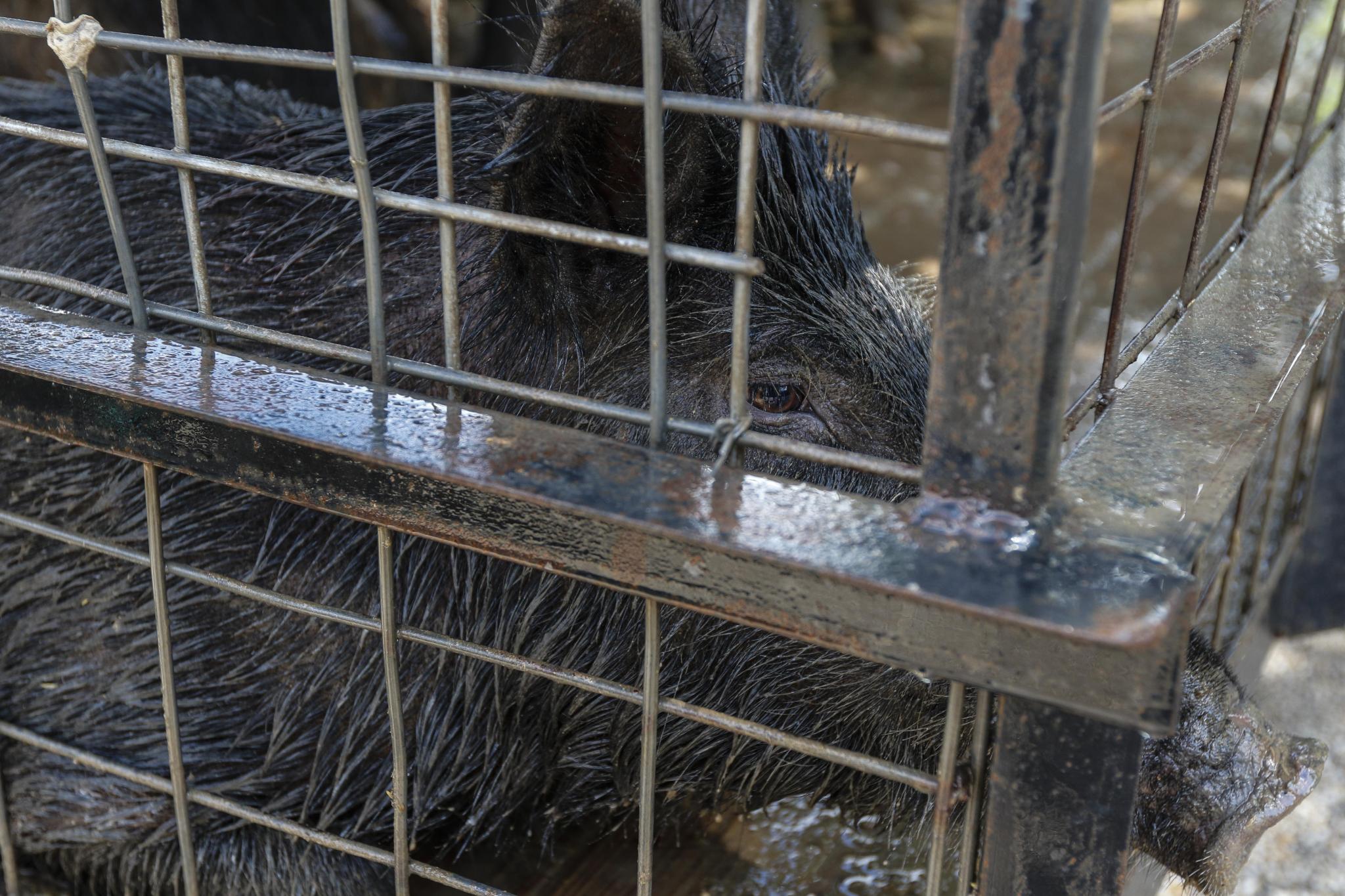
The snout of a feral hog trapped on a Caldwell County ranch pokes out of the corner of a trailer. Daily Record file photo
County doubling down on controlling feral hogs
Hays County will continue its participation in a feral hog abatement program with help from a Texas A&M Agrilife Extension grant.
At its meeting Tuesday morning, the Hays County Commissioners Court approved an interlocal agreement with the Texas A&M Agrilife Extension Service for the Feral Hog Abatement Program. The $13,100 grant provides funding assistance for the program, which will help reduce the feral hog population in the county. Hays County participates in co-managed regional feral hog abatement efforts along with Caldwell and Guadalupe counties.
The commissioners also approved an interlocal agreement with Texas State University’s Meadows Center for Water and the Environment for professional services related to the feral hog program. Precinct 2 Commissioner Mark Jones explained that the Agrilife Extension Service grant will pay for professional services from the Meadows Center, which will include project management, four landowner outreach events, a damage assessment, website development, a social media campaign and other elements of the program. Jones said this is the fifth or sixth year that Hays County has participated in the feral hog abatement program.
“Everybody knows that this is one of our big problems in Hays County is feral hogs,” he said. “They’re not just in rural areas anymore.”
The Meadows Center will also provide a cost-sharing incentive program and a remote-operated feral hog trap sharing cooperative as part of the program. Jones said they will also provide the commissioners with a report on the effectiveness of the program.
According to the Texas A&M Agrilife Extension Service, feral hogs cost at least $52 million in agricultural damage in Texas each year. The animals breed prolifically, making population control difficult. The service has estimated that the number of feral hogs statewide is between 1.8 and 3.4 million, with a population density ranging from 8.9 to 16.4 hogs per square mile.
Besides agricultural damage, the Agrilife Extension Service notes that feral hogs can cause soil erosion, lower water quality, disruption of native plants and the depletion of other species’ food sources. Feral hogs compete for food with white-tailed deer, turkeys, bobcats and other wild animals, according to the extension service, and can prey on livestock.











